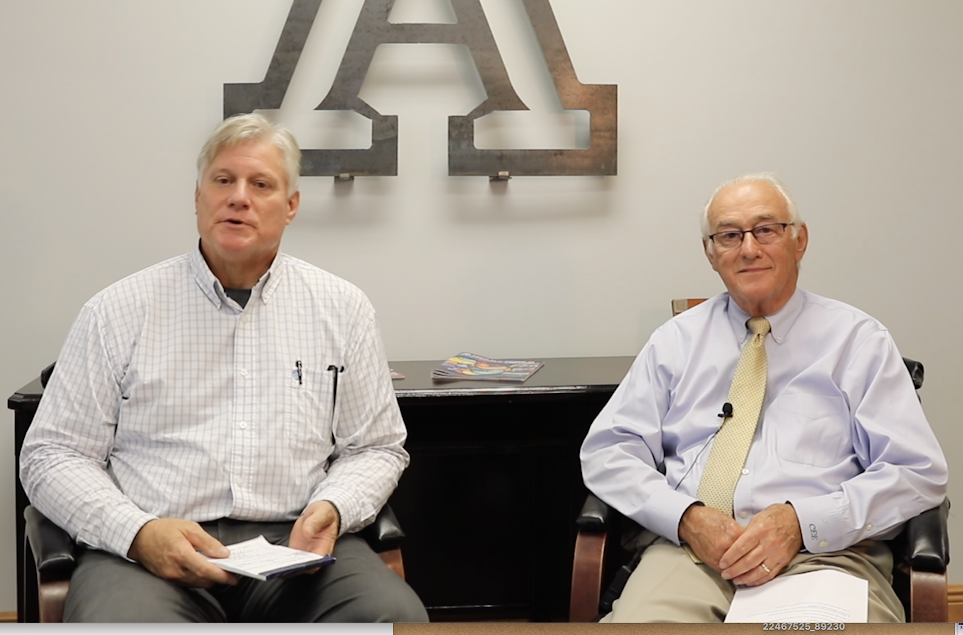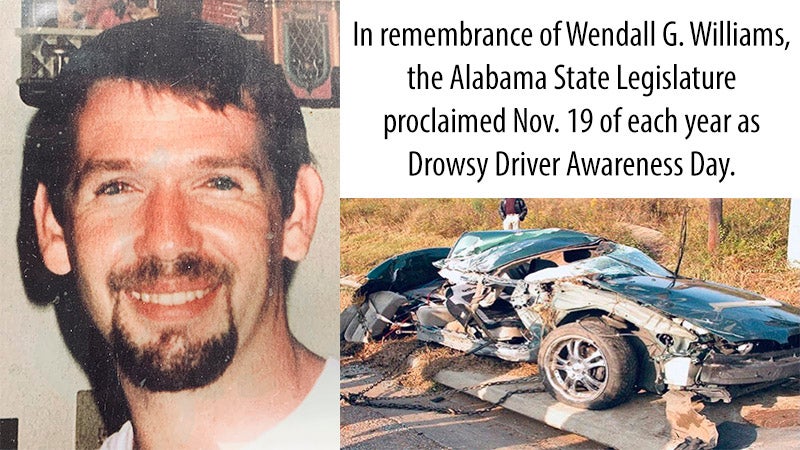ACS superintendent, local pediatrician discuss COVID-19, school, health concerns
Published 4:59 pm Friday, July 31, 2020
|
Getting your Trinity Audio player ready...
|
Children need to go to school, and even those parents who opt for a virtual school experience for their children this year could benefit from having their children attend a least a few weeks of classes.
That’s the message Andalusia City Schools Superintendent Ted Watson and local pediatrician Dr. Charles Eldridge shared in a video recorded Friday and shared this weekend to answer parents’ questions about health concerns in the 2020-21 school year.
“It is extremely important that we get back to school,” Dr. Eldridge said. “The American Academy of Pediatrics and others who look at such things think it is very important that we return to in-class teaching. But we want to do say in a manner that our children are protected to the greatest extent possible.”
An abbreviated version of the interview follows.
Dr. E: What do you feel about the importance of attending school in person, even if you have concerns about COVID-19?
Mr. Watson: I think brick and mortar classrooms and face to face instruction are paramount to a quality education, and I think our teachers would all agree with that as well. We know there are some risks that we incur. But we know this also: We have to do a better job than what happened in the spring of last year. We know our teachers did all they could do, but we found that kind of throwing out the education and asking kids to check in once a week was not effective.
We know there are state requirements, and virtual school is one of them. Traditional school is what we’re choosing to take. Traditional school looks a whole like what it always looked like, being in a brick and mortar school setting. Then there is what we are calling blending. We know that absenteeism is probably going to go up, because we know that every virus, every possible sickness we’ve ever had is still out there. We know some of those symptoms are the same, and what happens while we’re waiting for tests to take place is absence from the school.
As a result, we’ve got to figure out how to educate those kids. And then we’ve got virtual, and we have about 180 kids that are signed up for virtual school.
I’m here to make a plea, to not only those who have signed up for virtual, but also for those who think that they might want to (do virtual school), especially for grades K, 1, 2, and 3. A lot of the work that those kids do is tactile. It’s a lot of practice with motor skills and handwriting.
If you are a parent who is going to home school for those guys, you need to have some serious home-schooling skills to be able to incorporate the virtual testing that will take place.
For the high school virtual kids, junior high and even the elementary, we really need, Dr. E, those kids to be in school for the first two weeks to a month, because our plans are to practice the virtual school at school with our computers on our desks. The city has given us one-to-one (electronic device) capability. We have an internet system that I’m being told has been boosted to the point that that we can really kick this stuff out. And we need our kids in the room, actually attending a virtual classroom while they’re in the classroom, so that they can practice what it looks like and what it’s going to be like, when or if, we do go home again.
There is only one thing I requested of teachers. They can handle it however they want to, so long as every teacher makes contact with every kid, every day. We’re going to take attendance during that time and make sure they’re showing up. If they don’t, we’re going to find out why. And then, of course, we want to make sure that we are holding them accountable for their grades. If you do not do your work, and you do not show up for class, you will fail.
The other thing, and maybe the most important of all, is the overall mental health of the kids.
We recognize that we are the first line of defense for some of those kids, and we want to be to here for our kids.
If you’re a parent and you don’t know how to use (technology), we’ll be having some classes for you. You need to let your school know that you need to participate. It’s important that you hunker down and be a part of your kids’ success.
Dr. Eldridge: In transporting children, is there going to be a change, in terms of spacing or protocol on the buses or on unloading at the school?
Mr. Watson: We’re using masks, family members sitting together, assigned seats, and each child will be required to get a squirt of hand sanitizer before they come on the bus. If that is a concern, the best thing would be to bring your child to school instead of riding the bus, if that is an option to you.
Dr. Eldridge: Will social distancing be maintained when children are being let off from individuals’ cars?
Mr. Watson: Yes sir, as much as possible. We’re recommending that masks be used, do hand washing, and try to social distance as much as we possibly can.
Dr. Eldridge: Are we going to screen children for symptoms or vital signs when they arrive at school?
Mr. Watson: The first thing that needs to place is parents need to take ownership in this, as well. If your child is sick, or they don’t feel well, or they have fever, please keep them home. But when they come to school, we’ve bought every teacher an infrared thermometer that they can check the kids temperature the first thing when they get in the classroom.
Dr. Eldridge: What’s going to be the protocol in terms of movement around the school during the school day?
Mr. Watson: That’s different for high school, to junior high and elementary. Grades K, 1, 2, 3 and 4th grade, those students are self-contained, which means they stay in the same classroom all day long. Fifth grade and sixth grade, they switch classes. With those kids, it’s important to outline directional flow, and maintain social distancing as much as we possibly can. Wear masks, and keep our hands cleaned.
Dr. Eldridge: How is lunch going to be handled?
Mr. Watson: We know that Pre-K students will go to the cafeteria because they are the first ones who go, get their pre-boxed lunch. Everybody will have a hot meal, but it’s pre-boxed by the cafeteria staff. They’ll pick it up, eat, and we’ll do a thorough cleaning of the tables.
We know that the first, second, third and fourth grade will come to the cafeteria and pick up their plates, and go back to the classroom.
Grades five and six will be served in the cafeteria, by grade level. The cafeteria at the elementary school is large enough that we can social distance.
At the high school, we’re going to make use of our safe room at the junior high, and also the volleyball gym. And those guys are going to eat outside on pretty days. The key there is masks, hand washing, social distancing, and taking advantage of the outdoors when we can.
Dr. Eldridge: Are there facilities for hand washing in the rooms?
Mr. Watson: In the elementary schools, the answer is yes. Of course, everybody is going to have access to hand sanitizer that they can use on a regular basis. Teachers can have students clean their desks as often as they would like to. One of the things we are going to talk to our custodians about is making sure they make it around to clean door knobs, and make sure our restrooms are cleaned more consistently and thoroughly than ever. We actually hire a local cleaning company to come and clean every night, and they are aware of the deep cleaning that has to be done on a daily basis.
Dr. Eldridge: Will there be sharing of supplies, or utensils that are used in instruction, or will they be limited to one child?
Mr. Watson: As much as we possibly can. We were talking to a math teacher about the use of calculators. When there are manipulatives, teachers will make parents aware of the need to bring their own, or there will be cleaning that takes place in between classes.
Dr. Eldridge: How are you going to handle physical education period?
Mr. Watson: We’re hoping to make sure we go outside as much as we can. At the elementary school, we have four physical education teachers, and the plan is to conquer and divide. We’re going to make the numbers as small as we possibly can. We’ve decided for the purpose of getting everybody in, and getting everybody scattered out, we’ll move the class back down to 30 minutes, and split the groups into smaller sections, and go to different portions of the school. We’re very fortunate that we have ample space to spread out.
Same at the high school, with kids on the football field, practice fields, baseball fields, and the front lawn.
Dr. Eldridge: What’s going to be the protocol at the school when a child becomes ill during the school day?
Mr. Watson: We have hired an extra nurse, so that each school will have two on hand. A space has been located as a COVID sick bay, where we take kids if they’re sick, if they have fever, if they have symptoms. That’s why it’s very, very important for parents to make sure in Pre-K through 12 that we have accurate phone numbers and accurate email addresses so that we can make contact with parents, because we’re going to need to get those kids out of our school and back home to a place that they can’t transmit the disease.
Dr. Eldridge: Will they follow CDC guidelines, state department of health guidelines for return to school? Are you going to require a medical release, or what?
Mr. Watson: We have CDC guidelines, but more importantly, we have a number of guidelines that have been set out by the governor with regard to masks, and with the return. The CDC has reduced the number of days to be away to 10, but the governor’s policy still says 14. We will iron out those things in the next few days and push those policies out to parents.
Dr. Eldridge: Will there be a change in the protocol for picking children up at the school day, particularly in the elementary school?
Mr. Watson: Yes. Not only pick-up, but drop-off as well. We know how crazy schools are, especially at the elementary school, at the very first of the year. Especially the first week, or how every many days Mrs. Johnson and her staff designate that it’s appropriate for parents to walk kids in.
Please know, parents, if you’re coming into the building to bring your kids, we understand that’s a landmark date. To allow you to do that, we’re going to do something a little different this year. We’re asking that your Pre-K kids and kindergarten show up at 8:15, as opposed to 7:15 when the other kids are showing up. That way we can allow you to take your kids in. We also ask that you follow our protocol, wear your masks, bring them in and love on them. We love you, but get out as quick as you can so we can start our school day and minimize the possibility of some kind of health issue.
Dr. Eldridge: As a community, we need to be aware that returning to school is important. And parents need to encourage their children more than ever that the need to follow the rules and the instructions of their teachers. The parents need to work with the school and be part of the solution rather than creating a problem. We hope that the information that Superintendent Watson brought to us today is helpful to you and reduces your anxiety. There is some relatively good news about the virus, in terms of the morbidity and mortality of the disease not being as great as we had feared when it initially presented. But the education of our children is critical to our community, and attendance in the physical community is important on multiple levels. So please bear with Ted. Bear with the teachers. Be a supportive parent that makes Andalusia greater.






